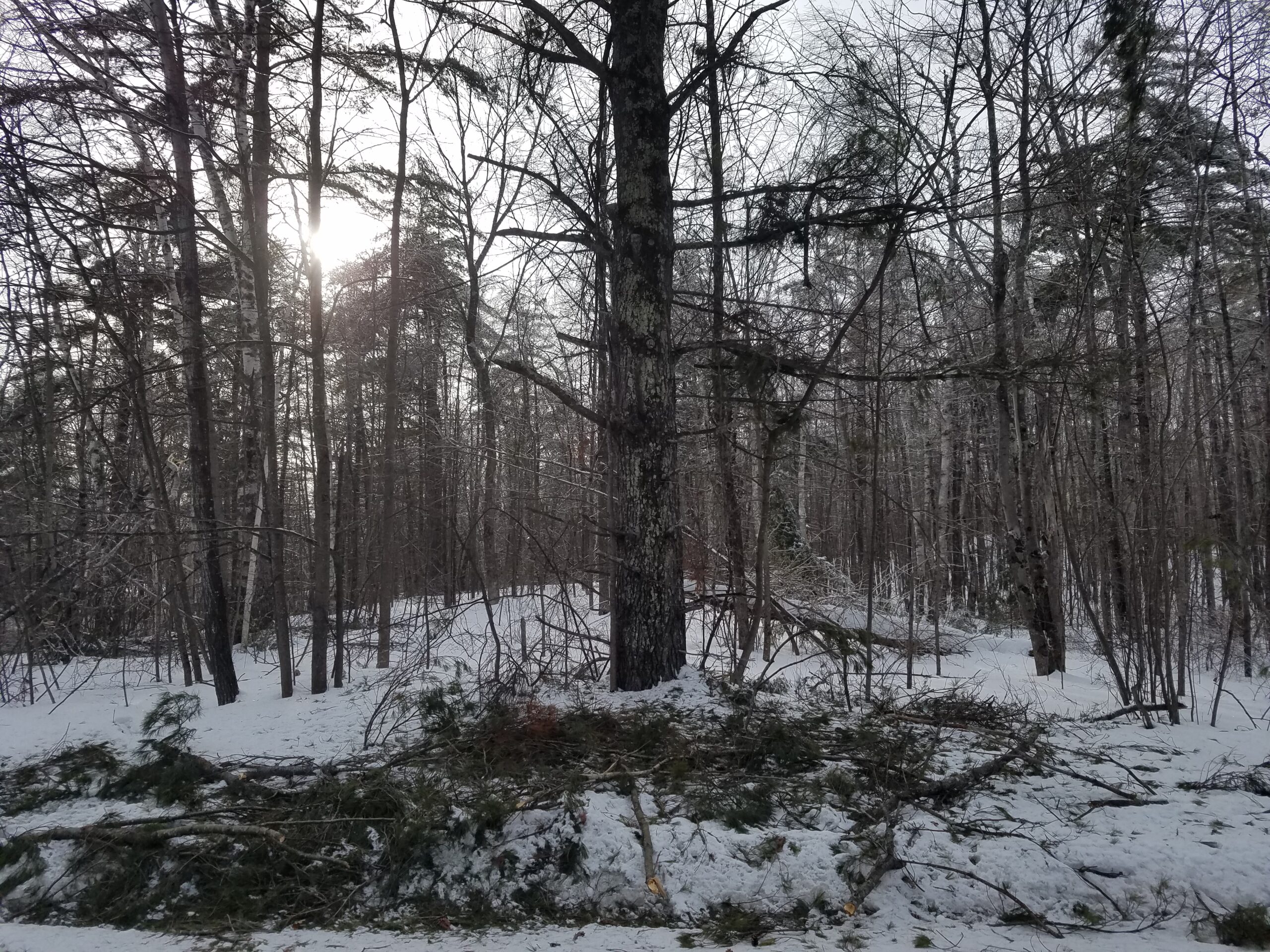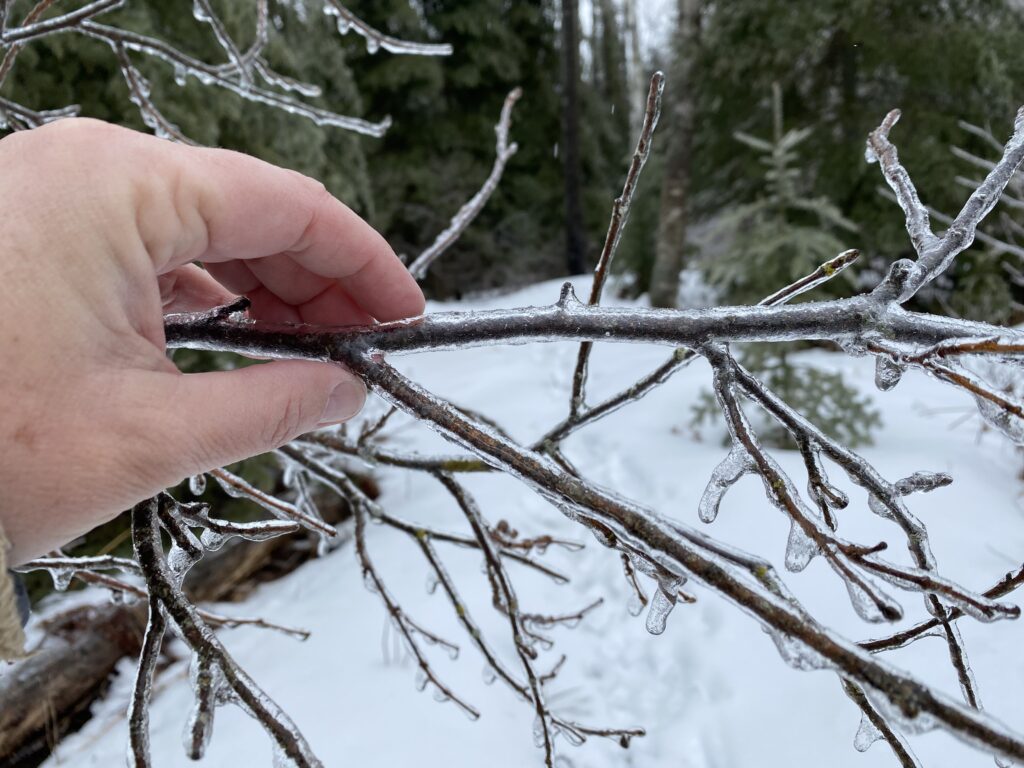By Linda Williams, DNR Forest Health Specialist, Woodruff, Linda.Williams@wisconsin.gov, 920-360-0665 & Paul Cigan, DNR Forest Health Specialist, Hayward, Paul.Cigan@wisconsin.gov, 715-416-4920.
Spring cleanup is always a busy time in the Northwoods as those with second homes and cabins make the trek northward to prepare for a summer of fun. For many, this will mean cleaning up trees and branches damaged by winter storms.

Large white pines (pictured here) and young birch growing on forest edges were most heavily impacted by winter’s storms. Photo: Wisconsin DNR
Several ice and snowstorms this winter blanketed Northwoods trees with a thick sheet of ice and heavy snow, resulting in dramatic winter scenes and a fair amount of tree damage. Both ice glaze and snow can be enormously damaging to trees, and their weight can lead to broken treetops and limbs and bent stems.
When cleaning up any damage, remember to avoid pruning or wounding oaks between April 15 and July 15 to reduce the risk of your trees getting oak wilt, a deadly fungal disease. If you must prune or cut an oak tree, remember to paint the cut with tree paint or wound dressing immediately. Doing so will prevent beetles that spread oak wilt from directly contacting the wood. This prevents oak wilt spores from growing into the tree.
Even unintentionally breaking or removing branches or bark on an oak can attract these beetles. If you can’t paint wounds or broken branches, it may be best to wait until after July 15 to take down trees so that they don’t cause additional damage to any neighboring oaks.
If you plan to do any burning during your spring cleanup, be sure to get a burning permit and check the burning regulations daily before you burn.

Weight of ice glaze on fine branches of birches caused stem to snap along forest edges. Photo: Wisconsin DNR


